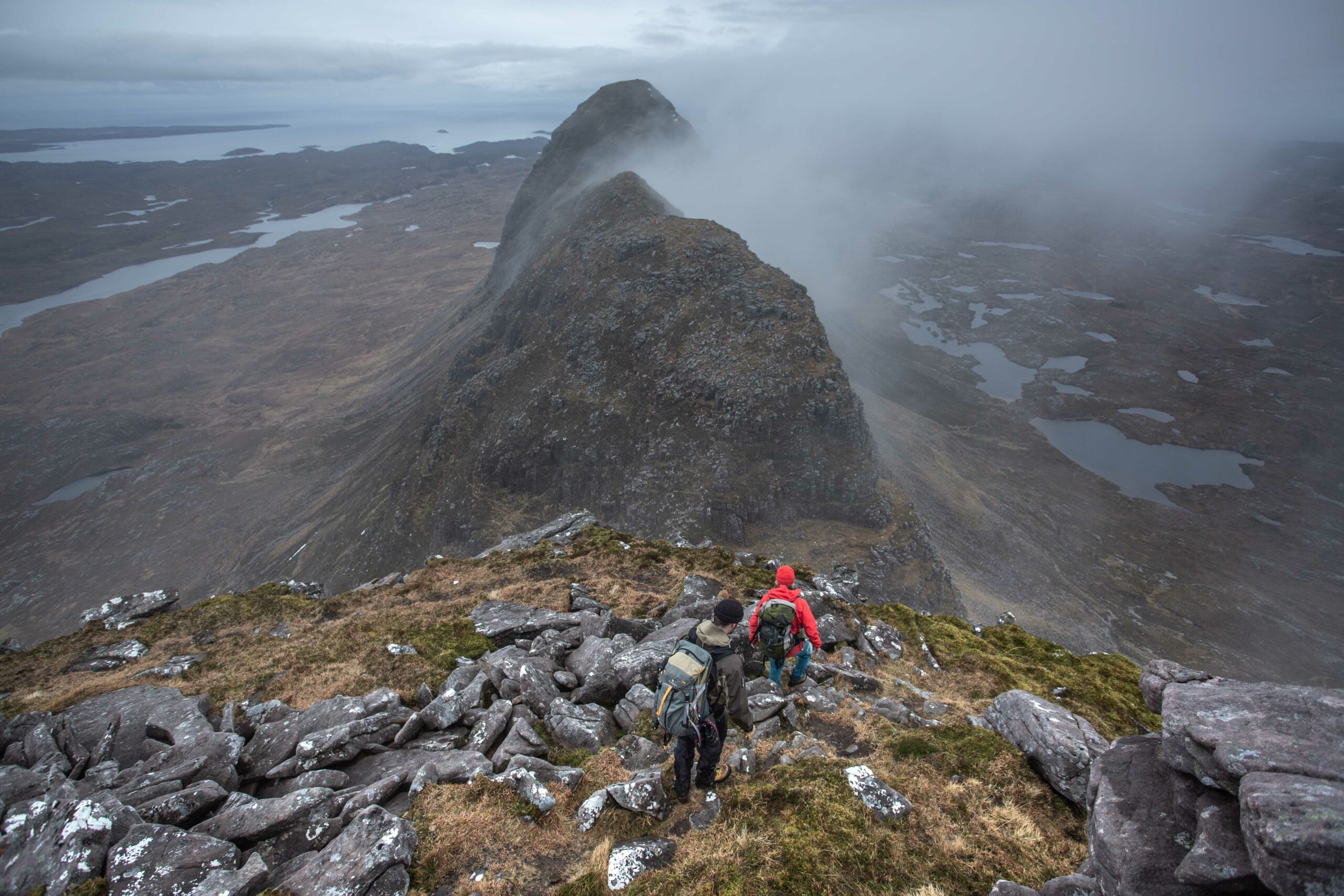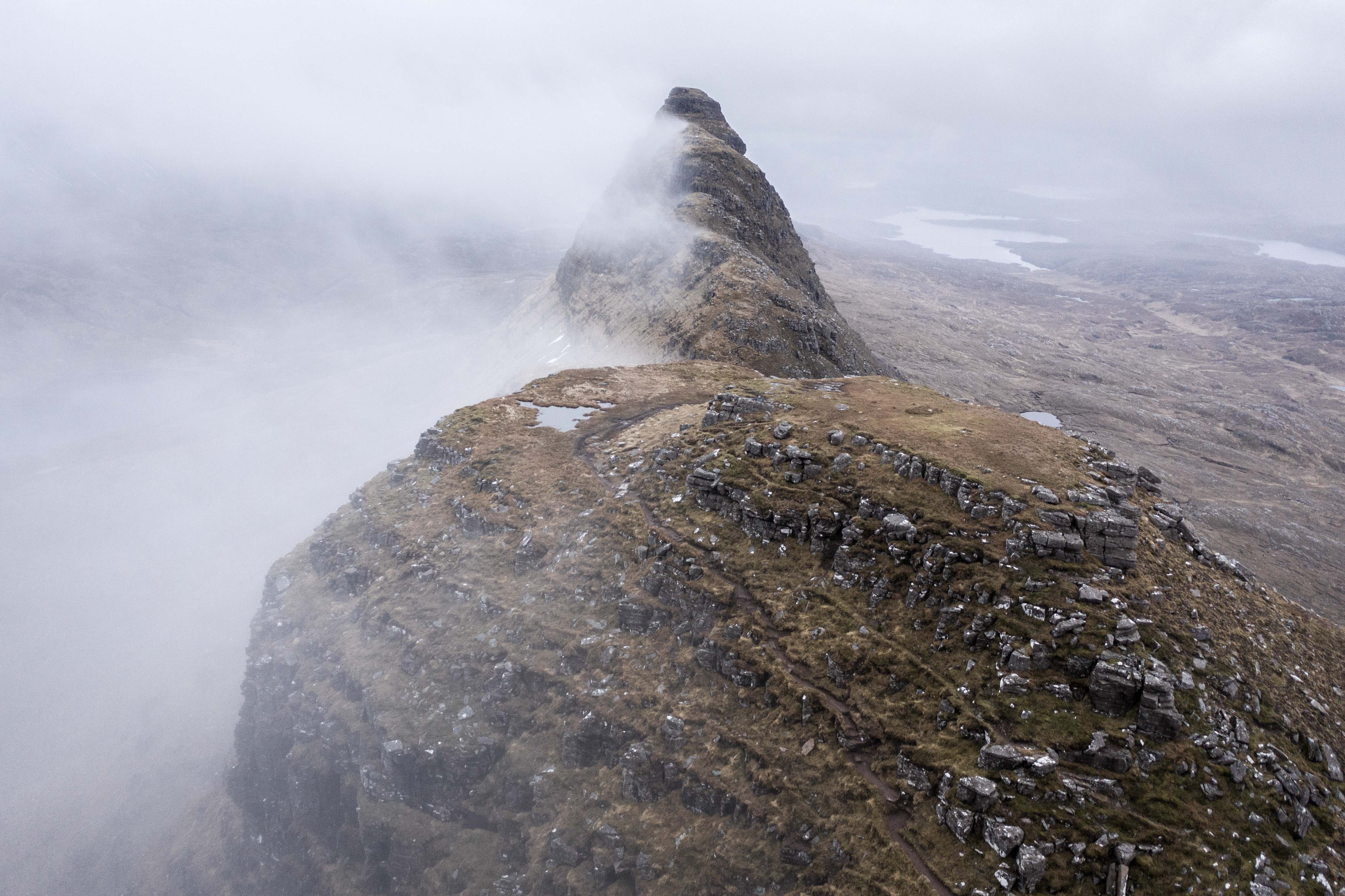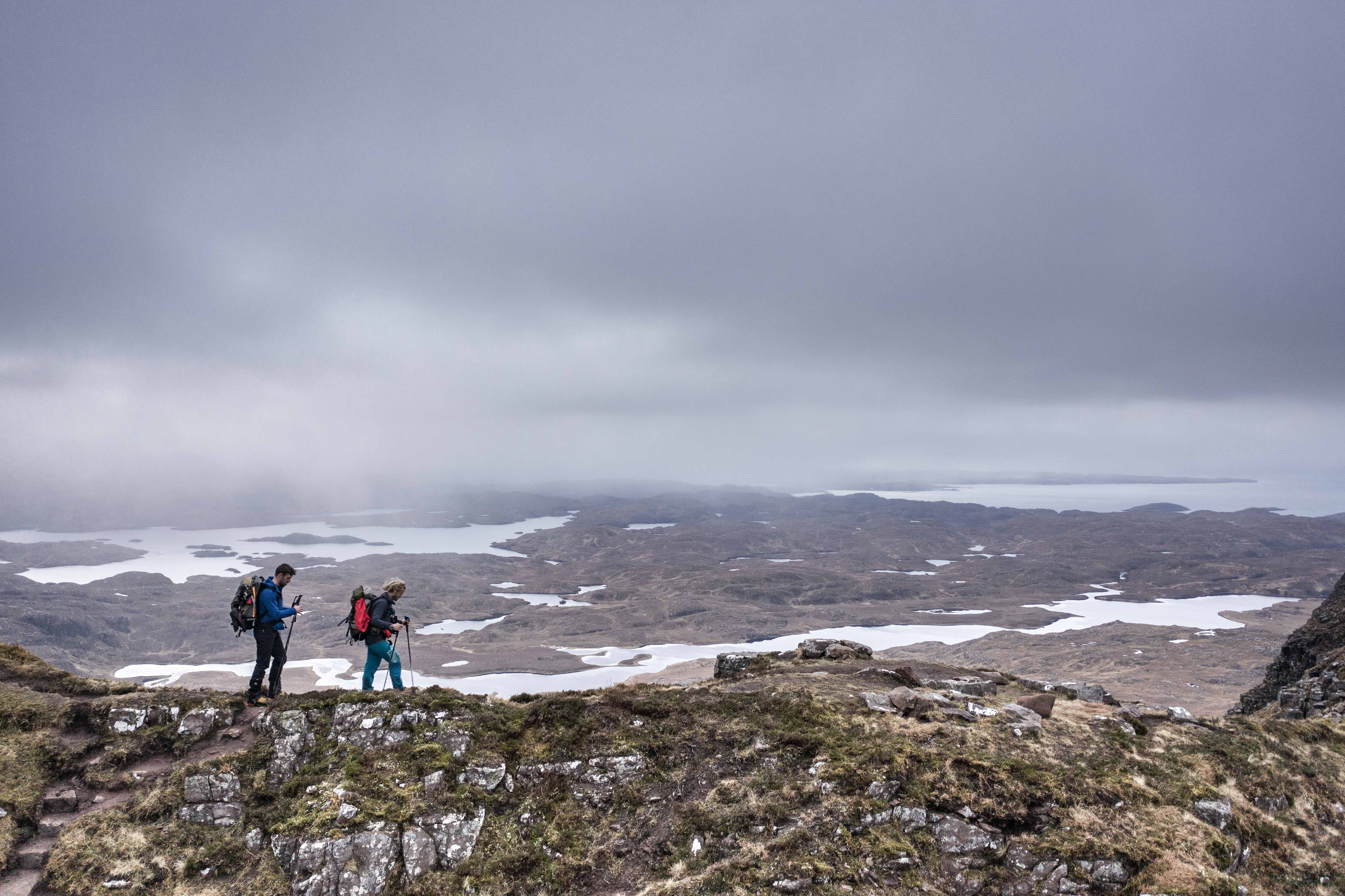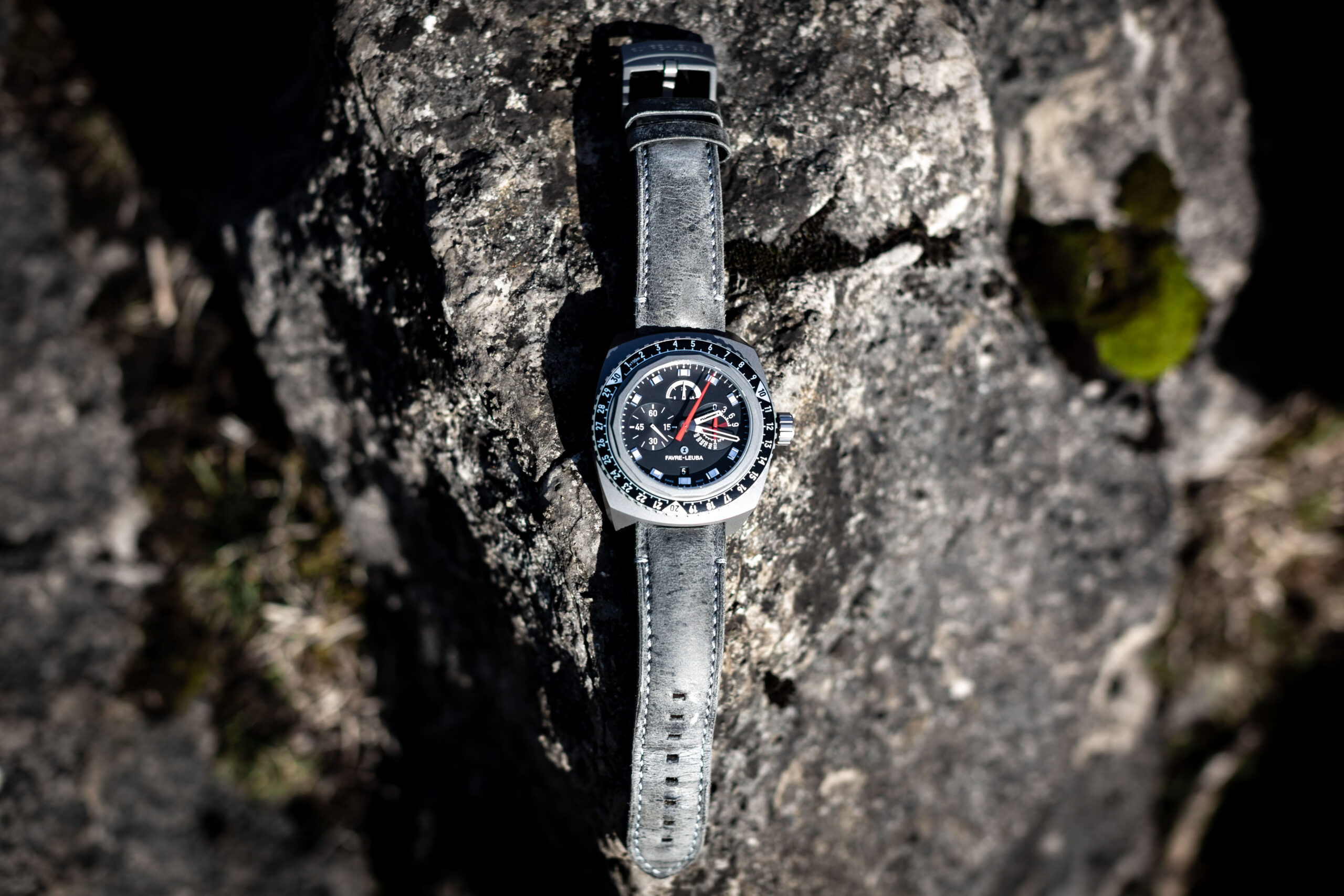The mountaineering spirit conjures visions of alpinists enduring the harshest climates and significant exposures while focusing the mind on the pure objective of summiting the desired peak. Pushing the limits of calculated risk and ensuring it doesn’t transition into foolish bravery. The Scottish mountains have long been a testing ground for those wanting to pursue grander visions further afield. Its rugged peaks reach from the valley floor to over 1300m into the mist. Furthermore, the ever-changing and unpredictable climate promises to push the endeavour of all those who climb here.

Icons Of The Past
Harold Raeburn was perhaps the most iconic Scottish mountaineer of the early 20th century. He entered into the vertical world driven by a passion for ornithology. Scouring the sea cliffs around the Scottish coastline for nesting birds soon turned to exploring the in-land mountain peaks. He was known locally for his first technical winter ascents on Ben Nevis (the tallest mountain in the United Kingdom at 1345m). Green Gully in 1906, Crowberry Gully in 1909 and then his most renowned climb of the Observatory Ridge in 1920.
Further afield, his name reached all corners of the world when he led the first British expedition to Mt Everest in 1921. Accompanied by the great George Mallory, their mission was to perform reconnaissance on Mt Everest and identify a possible route to the summit. The successful trip discovered a route up the East Rongbuk Glacier leading to the North Col and then the summit.
In the months following the Himalayan mission, Professor George Dreyer consulted Harold Raeburn and the team. Together, with other contributors, the first oxygen supplementary systems explicitly engineered to support high-ground mountaineering were constructed. Oxygen systems used in World War I inspired the new breathing apparatus designed for mountaineers. The devices were tested all across the British mountain ranges. Subsequent Everest summit attempts honed the equipment, and in later years supported the successful effort by Sir Edmund Hillary.

Moving Forward To The Present
James Austrums, James Aiken and Dean Russell formed a knowledgeable expedition team. They combined vast climbing experience with expeditionary photography and videography skills. Together, they planned a trip into the heart of the Scottish Highlands with a vision of capturing the atmospheric essence of mountaineering. While walking in the footsteps of the great Harold Raeburn, they hoped to scale an iconic Scottish mountain in truly adverse conditions and set a classic ‘Highland Line’.
The initial plan was to travel north through Scotland, climb aboard James Aikens sailing vessel and complete a short voyage to the starting point for the Cuillin Ridge climb. However, extreme winds created a raging ocean that derailed their initial plans to sail around the Isle of Skye, leading to Cuillin Ridge. The inclement and unpredictable weather in the Scottish Highlands is what makes climbing here so unique and diverse. Those who come here are not looking for clear blue skies and pristine peaks. But instead an immersive and rugged environment ready to test your climbing ability as much as your powers to endure nature’s adversities.


On The Mountain And Into The Wild
With ever-changing weather conditions, the team’s plans needed to stay flexible and keep several options on the table. Due to the raging seas, they chose to aim for their mainland objective of hiking into Assynt and scaling the North Face of Suilven. After spending a damp cold night in Suileag Bothy, the team encroached on the base of Suilven. Fresh car-sized boulders lay around the bottom of the mountain, remnants of recent storms. Next, the plan was to scale a five-pitch route to the summit. However, as they made their way through the first few pitches, the rain came in hard. The team adjusted mid-climb for a less extreme route, and after many hours, they ascended to the summit of the ridge. In the distance, the closest settlement layover 4 hours away. In such an isolated environment, it was best to lower the risks to complete the climb.
As the team ascended the ridgeline, a vast and wild landscape came into view. Highland lakes, ocean inlets and untamed lands stretched into the distance. Suilven at this moment was shrouded in low-lying mist, circling the mountain and offering the idyllic atmospheric feel they had hoped to witness. Their inner creative souls were snapping into action to capture the footage to fulfil their videography goals. The overriding aim was to document an authentic aesthetic of what it was like when climbing icons of the past stepped on these mountains. Even today the highlands are still as wild as they were back then.

The Raider Bivouac 9000 Black Edition
Throughout the duration of the ‘Highland Line’ mission, the Bivouac 9000 Black Edition accompanied the team. The new version comes with a sharp black face, offering high contrast between the white dials and red hands. The black bezel with white markers all come together to provide the climber with increased legibility. Mountainous regions all around the world are known for the pace at which weather and visibility can change. In Scotland, it was no different, and mid-way up the mountain, a thick fog began to fill in around the team. The importance of the barometric capabilities of the Bivouac had never been as high. The team faced rapidly changing weather and visibility conditions. The Bivouacs altitude reading provided James Austrums with the information needed to make a decisive decision to continue upward.

Raider Bivouac 9000 ‘Black Edition’ Technical Specs
CASE: Titanium. Bidirectional rotating bezel with anodized aluminium insert; screw-in crown; sapphire crystal with antireflection coating on both sides; screwed and aligned case back; diameter 48 mm, water-resistant up to 3 bar/30 m
FUNCTIONS: Hours, minutes, small seconds, central hand to display altitudes of 3,000 m per full rotation, subdial for displaying altitudes of up to 9,000 m and air pressure in hPa, power-reserve indicator, date display
MOVEMENT: Hand-wound FL311 movement, based on the EMC 3903M calibre; specially designed mechanisms for altimeter and power-reserve indicator; power reserve of 65 hours
DIAL: Applied indexes; luminous indexes and hour and minute hands, red hand for altimeter














